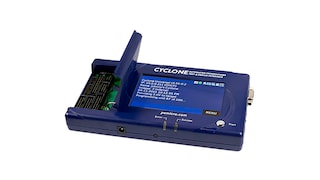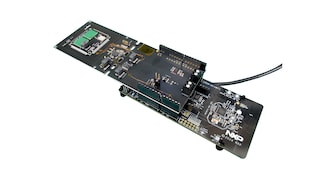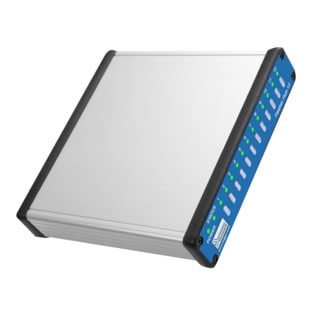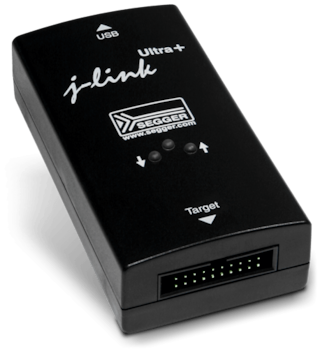
PMIC for Low Power Applications
Sign in for a personalized NXP experience.
Roll over image to zoom in


This is a modal window.
Beginning of dialog window. Escape will cancel and close the window.
End of dialog window.
This is a modal window. This modal can be closed by pressing the Escape key or activating the close button.
This is a modal window. This modal can be closed by pressing the Escape key or activating the close button.

This is a modal window.
Beginning of dialog window. Escape will cancel and close the window.
End of dialog window.
This is a modal window. This modal can be closed by pressing the Escape key or activating the close button.
This is a modal window. This modal can be closed by pressing the Escape key or activating the close button.

This is a modal window.
Beginning of dialog window. Escape will cancel and close the window.
End of dialog window.
This is a modal window. This modal can be closed by pressing the Escape key or activating the close button.
This is a modal window. This modal can be closed by pressing the Escape key or activating the close button.
The MCX W71x family features a 96 MHz Arm® Cortex®-M33 core coupled with a multiprotocol radio subsystem supporting Matter, Thread, Zigbee and Bluetooth LE. The independent radio subsystem, with a dedicated core and memory, offloads the main CPU, preserving it for the primary application and allowing firmware updates to support future wireless standards. The MCX W71x also offers advanced security with an integrated EdgeLock® Secure Enclave Core Profile and will be supported by NXP's EdgeLock 2GO cloud services for credential sharing.
The MCX W71x family supports industrial and IoT devices as a single chip solution or by acting as a coprocessor in a hosted architecture. NXP delivers a complete software solution to allow the MCX W71x to operate seamlessly as a network or radio coprocessor with NXP's broad portfolio of MCX MCUs, i.MX RT crossover MCUs and i.MX applications processors.
Building on NXP's strong history of providing industrial edge solutions, the MCX W series offers a wide operating temperature range from -40°C to 125°C and peripherals for industrial applications, including an optional CAN interface and will be part of NXP's 15-year Product Longevity program to support long-term industrial use.
The MCX W series is supported by the MCUXpresso Developer Experience to optimize, ease and help accelerate embedded system development.
Developers can get started quickly by using one of the example projects included in the MCUXpresso SDK.
Choose a diagram:


PMIC for Low Power Applications

Safety Mini CAN FD SBC for Automotive Applications Fit for ASIL B

MCX L14x and L25x Ultra-Low-Power MCUs with Dedicated Sense Domain and Adaptive Dynamic Voltage Control
4 results
Include 0 NRND
Part | Order | CAD Model | Status | Budgetary Price excluding tax | Core Type | Operating Frequency [Max] (MHz) | Flash (kB) | SRAM (kB) | Wireless Connectivity | Max Transmit Power (dBm) | Serial Communication | FlexIO | CAN FD | Security | GPIOs | Ambient Operating Temperature (Min to Max) (℃) | Package Type | Package Dimensions (LxWxZ (mm)) |
|---|---|---|---|---|---|---|---|---|---|---|---|---|---|---|---|---|---|---|
Active | 10K @ US$3.07 | 1 x Arm Cortex-M33 | 96 | 1024 | 128 | BLE, Matter, Thread, ZigBee | 10 | 1 x I3C, 2 x SPI, 2 x UART | 1 | — | Core Profile, NXP's EdgeLock Secure Enclave | 22 | -40 to 125 | HVQFN40 | 6 x 6 x 0.85 | |||
Active | 10K @ US$3.15 | 1 x Arm Cortex-M33 | 96 | 1024 | 128 | BLE, Matter, Thread, ZigBee | 10 | 1 x I3C, 2 x SPI, 2 x UART | 1 | — | Core Profile, NXP's EdgeLock Secure Enclave | 29 | -40 to 125 | HVQFN48 | 7 x 7 x 0.85 | |||
Active | 10K @ US$3.17 | 1 x Arm Cortex-M33 | 96 | 1024 | 128 | BLE, Matter, Thread, ZigBee | 10 | 1 x I3C, 2 x SPI, 2 x UART | 1 | 1 | Core Profile, NXP's EdgeLock Secure Enclave | 22 | -40 to 125 | HVQFN40 | 6 x 6 x 0.85 | |||
Active | 10K @ US$3.25 | 1 x Arm Cortex-M33 | 96 | 1024 | 128 | BLE, Matter, Thread, ZigBee | 10 | 1 x I3C, 2 x SPI, 2 x UART | 1 | 1 | Core Profile, NXP's EdgeLock Secure Enclave | 29 | -40 to 125 | HVQFN48 | 7 x 7 x 0.85 |
Quick reference to our documentation types.
1-10 of 36 documents
Compact List
There are no results for this selection.
Sign in to access authorized secure files. Learn more about secure access rights.
Please wait while your secure files are loading.
1-10 of 36 documents
Compact List

Receive the full breakdown. See the product footprint and more in the eCad file.
1-5 of 11 hardware offerings



Additional hardware available. View our featured partner solutions.








Sign in to access authorized secure files. Learn more about secure access rights.
1-5 of 6 hardware offerings






To find additional partner offerings that support this product, visit our Partner Marketplace.
1-5 of 11 hardware offerings



Additional hardware available. View our featured partner solutions.








Quick reference to our software types.
1-5 of 18 software files
Additional software available. View our featured partner solutions.
Note: For better experience, software downloads are recommended on desktop.
Sign in to access authorized secure files. Learn more about secure access rights.
Please wait while your secure files are loading.
1-5 of 15 software offerings
To find additional partner offerings that support this product, visit our Partner Marketplace.
1-5 of 18 software files
Additional software available. View our featured partner solutions.
Note: For better experience, software downloads are recommended on desktop.
1 training
1 trainings
1 trainings
To find additional partner offerings that support this product, visit our Partner Marketplace.
There are no recently viewed products to display.

Help us improve your experience on our site. We invite you to take our five-question survey.